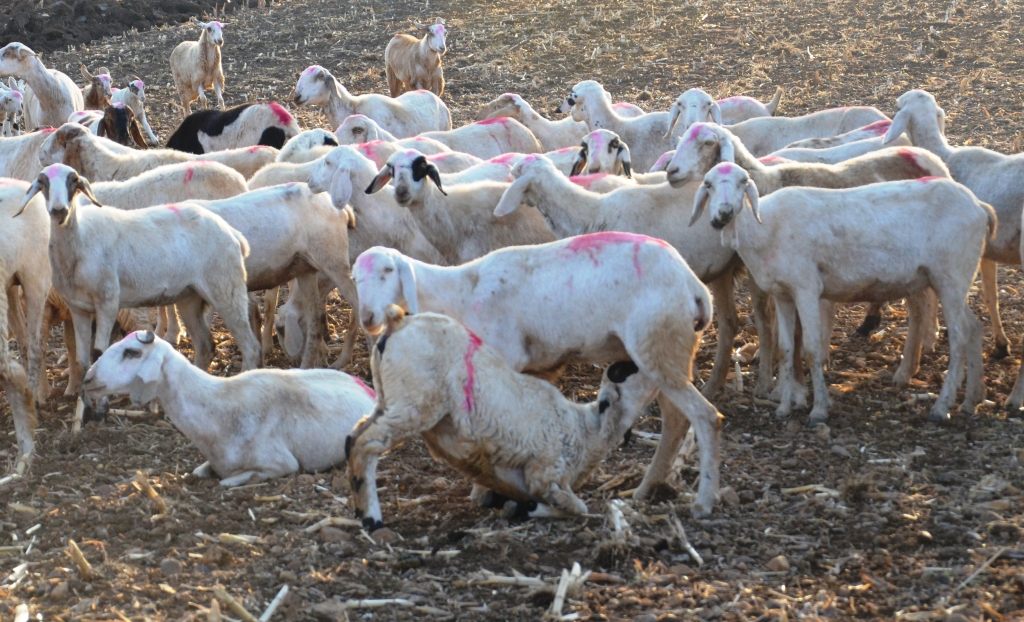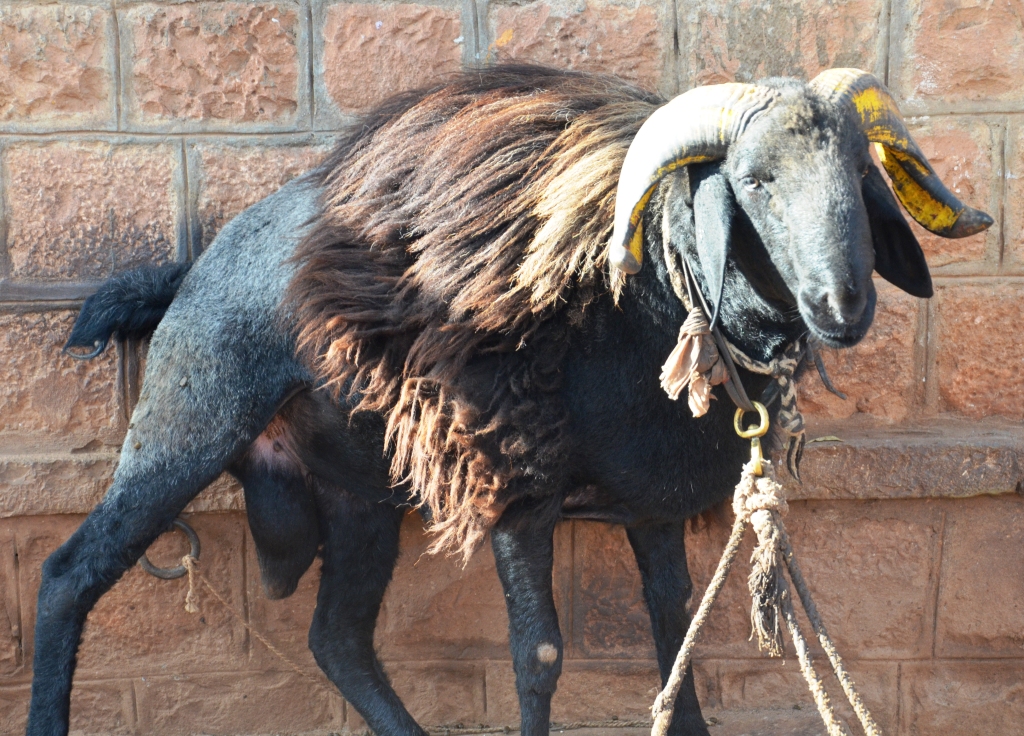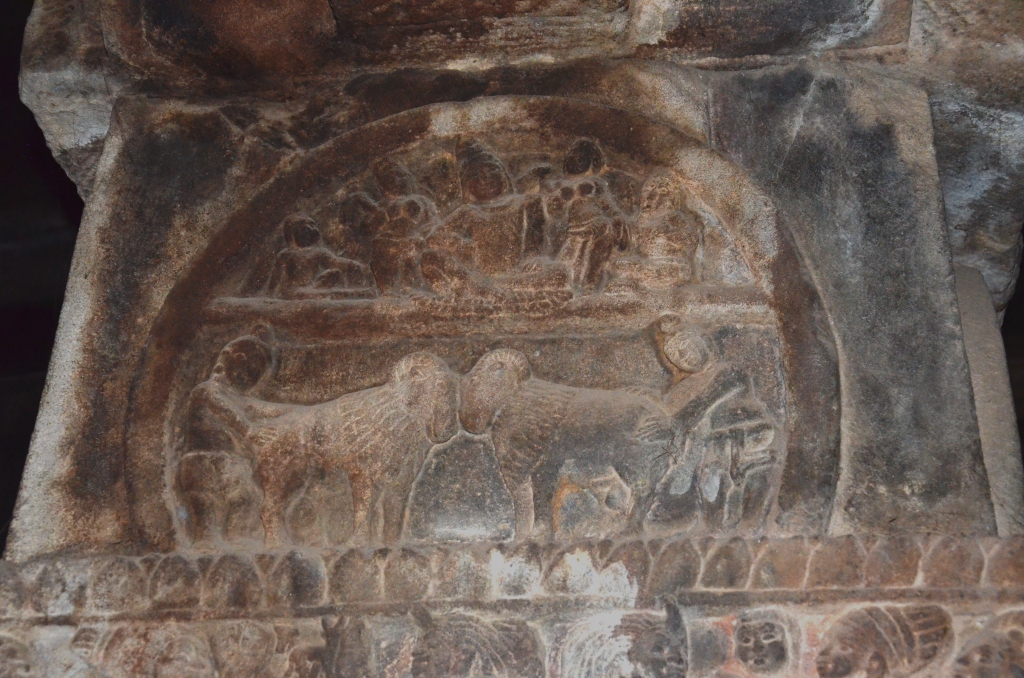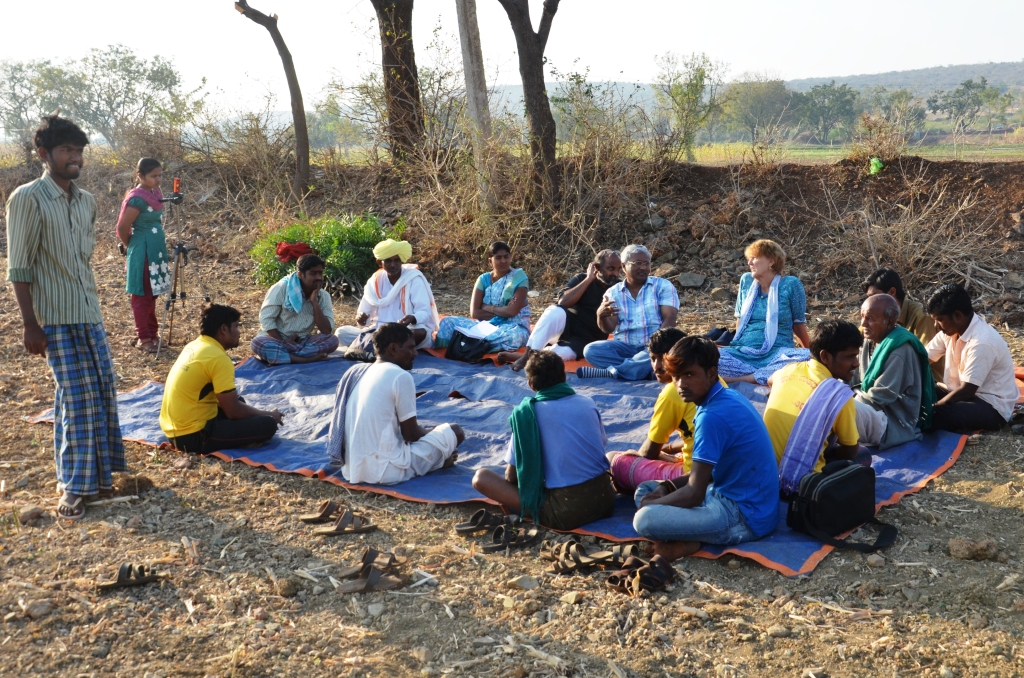I am currently visiting the shepherding communities of the Deccan Plateau to see how the efforts by our partner NGOs to develop a Biocultural Protocol are coming along. I have the best possible guides: Nilkanth Mama, a leader of the Kuruba shepherd community and Gopikrishna of Mitan Handicrafts who knows the area intimately.
We started in Bagalkot in Karnataka where veterinarian Dr. Bala Athani from the NGO Future Greens is supporting rural communities with access to credit and marketing, as well as animal health care and other services.
In this area two developments are noteworthy: The large number of people who have recently taken up shepherding and the fact that the traditional breed of the area, the Deccani sheep, has almost totally been supplanted by a breed called Yellaga.
The first shepherds we met belonged to the Valmyki community who are actually hunter-gatherers (and have the most amazing hunting dogs), but now herd sheep. They pen them overnight on farmers’ fields, and during the day graze them on the uncultivated hillocks to which they have free access (Forest Department is not interfering). The lambs are penned during the day and given all kinds of supplementary feed to make them grow fast. By the age of 3-4 months they are already sold, fetching about 4000 Rs on the local market – which supplies the big cities.
One of the interesting topics raised by these shepherds was the role of the wolf. They were concerned that the wolf had disappeared from the area and explained that on every new moon they worship the pen, the wolf and their goddess. When a wolf dies they make a burial for it. And when an infectious disease hits, they leave a lamb in the wilderness to the wolves believing that this will prevent the further spreading of the disease. Without the presence of wolves they felt they had less protection against epidemics. (A recent survey of the wolf population in Karnataka has confirmed the correlation between sheep and wolves, and that shepherds are not a threat to them.)
The Yellaga is a hair sheep breed that grows faster than the Deccani wool sheep and has the advantage of not needing to be shorn – a process that is not worthwhile these days when wool prices have hit rock bottom.

The only place where we actually found the traditional Deccani breed of sheep was the village of Honnakatti which is famous for fighting rams. These rams can be worth up to Rs 400,000 and get pampered with milk and eggs – actually one has to keep a buffalo to feed them, one of the owners told us.

Later, when visiting the temples of Pattadakal, a World Heritage site dating back to the Chalukiya period in the 8th century A.D., we were excited to come across a carving showing a ram fight, providing proof that this kind of amusement is more than 1200 years old. Striking was also the similarity to the present day rams with the long shaggy hairs on the front part of the body making them look like lions!

In the more fertile parts of Karnataka around Belgaon where the soil is black, the Yellaga has not made that much inroads and there are still some weavers who make the traditional kambli, the signature blanket of the Kuruba shepherd community.

While the kamblis used by shepherds today are increasingly made from acrylic, those used for the worship of the local God Beerappa (the first shepherd who was made by God Shiva and who is the ancestor of all Kuruba) definitely need to be made from wool.

Near Kolhapur in Maharashtra we also tracked down the sacred herds of Balumama, a shepherd who died in 1966 but is now worshiped as a folk deity for his services to the rural poor.
Balumama had given his 60 sheep to his community for care taking, and by now his small flock has grown to 25,000 head and is divided into 14 herds that are grazed by volunteers and welcomed by villagers wherever they go, because they are thought to bring good luck and it is an honour to host them. As Gopikrishna emphasized, this is real community conservation of a genetic resource!

The income from this herd has given rise to a huge temple complex where people come to worship from far and near. And these herds are entirely black, they are almost glowing with blackness if that is possible.
Well, all this may sound very spiritual to any non-Indians, so lets get back to hard core economics. My visit yesterday to the flock of Nilkanth Mama that is taken care of by his two sons and one grandson (part-time) taught me a lot.

The major income generated from this herd is actually from manure. The farmers pay 1 Rupee (or sometimes up to 2 Rupees) per sheep per night that the herds are penned on their fields. In Nilkanth Mama’s herd that amounts to 300 Rupees per night or 9000 Rs per month, an income not to be sneezed at in rural India! And imagine what this practice saves the nation in terms of chemical fertilizer! And how it reduces greenhouse gas emissions, considering that fertilizer production is one of the biggest culprit in climate change!
Finally, I was so happy to see how the pastoralist occupation continues into the next generation! It gave me a little hope for the future.



 Follow
Follow
Very interesting report and analysis, congratulations Ilse!
Wonderful publication and quite interesting for me . Although we live in eastern part of India we do not have such wondaful information about the traditional life style of the pastoralists living in the country . Thank you very much for your kind dedication for the whole society as well as for the people like us . Congratulation Dr. IIse !
Wonderful insight into the Pastoral world and their ways! Thanks Ilse.